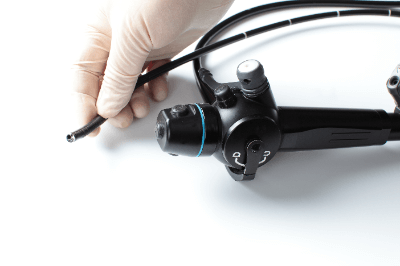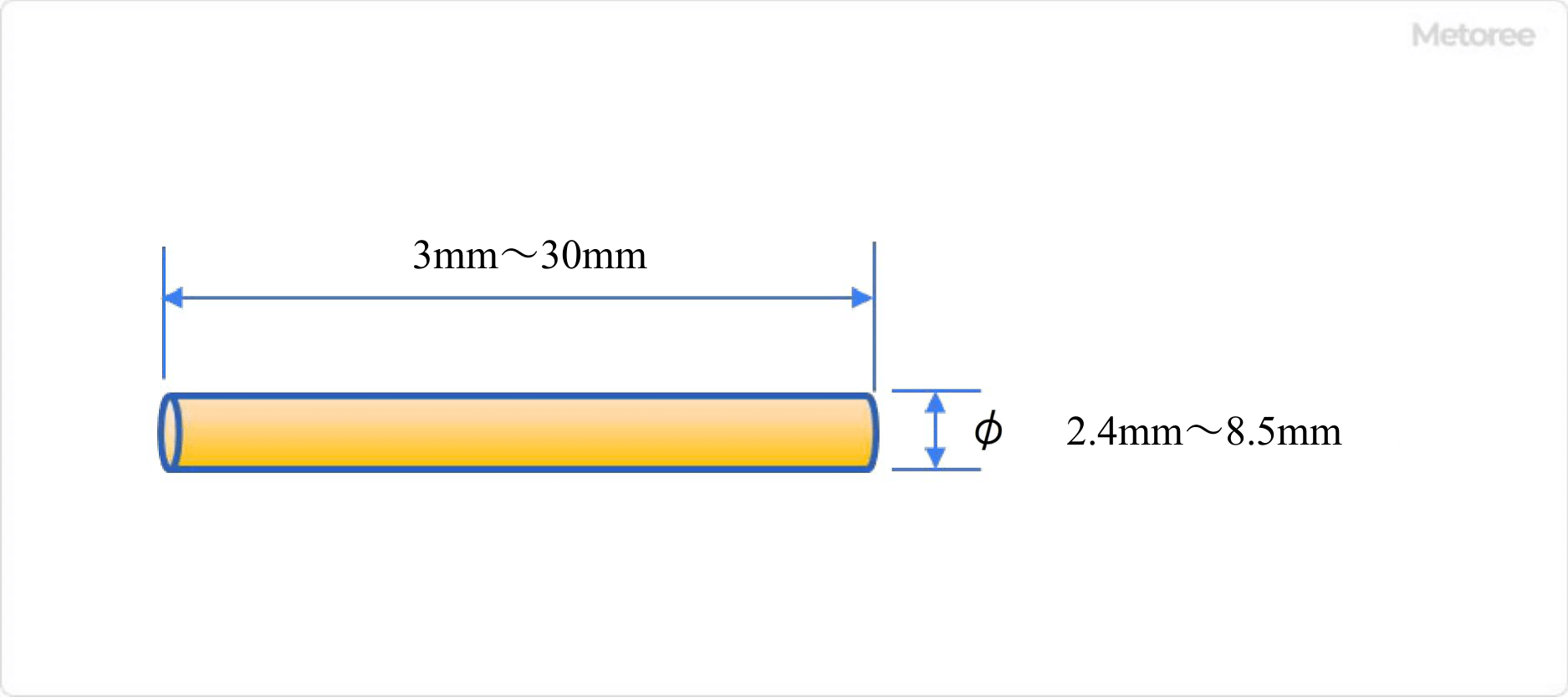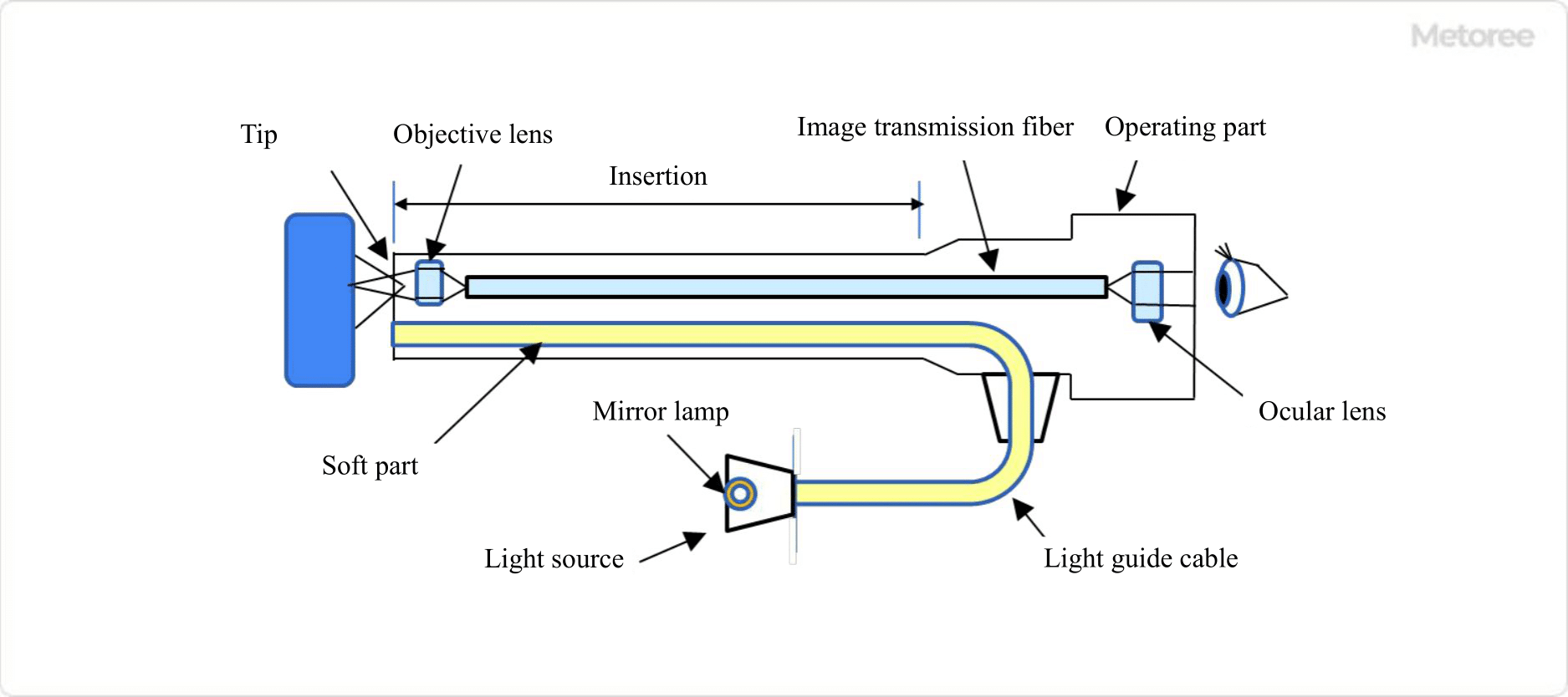What Is a Fiberscope?

Fiberscopes, also called industrial endoscopes or medical endoscopes, are made of many thin glass fibers strung together and fitted with a camera.
A very small digital camera is attached to the tip of the scope, which can be bent and deformed at will. Compared to ordinary intracanal inspection cameras, the diameter of the camera is very thin, yet the image quality is highly accurate and the tip can be freely movable. Even if the fiber is bent, the image transmission is accurate because light travels while reflecting internally.
Because the Fiberscope is integrated with a light source and is clearly visible, it is possible to observe narrow areas and internal details that cannot be seen visually. Because of this, they are more expensive than other types of endoscopes. Generally, the size is from 2.4 mm to 8.5 mm in diameter, and the cable length is from 3 m to 30 mm.

Figure 1. Fiber size
Uses of Fiberscopes

Figure 2. Uses of a fiberscope
Fiberscopes are used to inspect and observe the inside of narrow and intricate structures and pipes that cannot be directly visually checked. Major applications include internal inspection of automobiles, infrastructure development and maintenance, quality control in the manufacturing industry, and disaster relief scopes. In particular, they are used inside pipes and ducts, and in places that are inaccessible to the eye due to the structure of buildings.
In addition, they are also used as medical equipment. For example, endoscopes are used to examine the intestines and stomach. For organs located deep inside the body, it is not possible to see directly with the eye, and if the outer diameter of the camera or tube is too large, there is a risk of hitting the walls of the organ or other parts of the body and damaging the cells. On the other hand, the camera of Fiberscope can be used safely because the tip of the camera can also be freely movable.
Principle of Fiberscope

Figure 3. Structure of a fiberscope
The optical fiber of a Fiberscope consists of a core in the center and surrounding parts called the gladding, which are covered with a film called plastic primary coat. The optical fiber is flexible and can be bent and moved freely, allowing it to move in accordance with the intended use.
Fiberscopes have a structure in which the eyepiece and the objective lens at the tip are connected by thousands or tens of thousands of optical fibers that are focused together, allowing direct visual observation through an image guide made of these optical fiber bundles.
When viewing an object with a Fiberscope, an image of the object is projected on the end face of the objective lens, and the image can be clearly seen by magnifying the image with an eyepiece.
Other Information about Fiberscopes
1. Advantages of Fiberscope
A Fiberscope is a device that uses a thin tube to view the image at the tip. Because of its flexibility, it is also used as a medical endoscope for internal examination of the intestines and stomach by moving the tiny camera and the flexible tip.
For organs deep inside the body, the great advantage is that the tiny size of the camera and tube and the freely movable tip minimize the risk of hitting the walls of internal organs and damaging cells, so they can be used with peace of mind.
2. Disadvantages of Fiberscope
A disadvantage is that the honeycomb structure, which consists of a bundle of thin fibers, may cause a slight shadow of the boundary line. Also, because the image is viewed through the fibers, the longer the fiber is used, the darker it becomes. Another disadvantage is that it can break if too much load is applied. If you try to make the fiber longer, the cost will be higher.